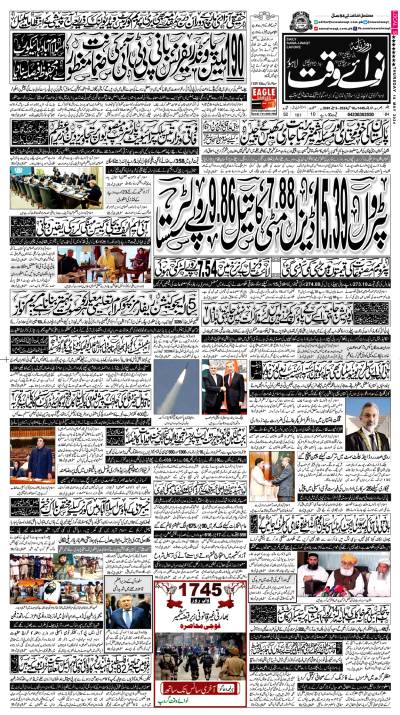As we delve into the looming political horizon, the indomitable presence of Nawaz Sharif cannot be overlooked. A figure potentially on the brink of clinching the Prime Minister’s office for the fourth time - a first in Pakistan’s history. One anticipates a seasoned leader of his stature to perhaps more gracefully navigate the political landscape. However, recent endeavors have, regrettably, left a trail of disillusionment among many.
The entry of PML-N into the fray, albeit delayed, carries a distinct spark, one fueled by unsettling undercurrents. Analysts, such as Michael Kugelman from the Wilson Center, posit that Sharif’s prominence stems from a newfound alignment with the establishment.
Nevertheless, regardless of the political machinations at the upper echelons, it is crucial to dissect and scrutinize the various facets of the election campaign. This entails a critical examination of the narratives disseminated by influential parties.
It’s no secret that a significant portion of the Pakistani populace grapples with limited education, often failing to grasp the nuances of politics. Leaders like Sharif capitalize on this, relying mostly on populist agendas such as misleading development schemes and promises of subsidies when spearheading their campaigns. While these tactics do arguably lead to divisiveness, other narratives championed by his party delve into even more polarizing territory.
Pakistan’s inception was rooted in a grand nationalist agenda — an ‘us’ versus ‘them’ paradigm against the Hindus of India. The spirit of nationalism persisted, irrespective of leadership changes, be it under Bhutto or Gen. Zia. The predicament with perpetuating notions of black and white nationalism lies in the perpetual search for a common enemy. While India often assumes this role on the international stage, domestically, divisions are fomented, creating animosities among ethnic and cultural groups.
Various political entities exploit these divisions for electoral gains. The MQM targets Muhajirs in Karachi, Pakhtun parties such as ANP focus on Pakhtunkhwa, and PMLN thrives on Punjabi Nationalism. Despite Punjab’s affluence and perceived privilege, it has become a convenient scapegoat for political groups outside the region, voicing legitimate grievances about disproportionate attention and resource allocation. Punjab, however, is not inherently problematic; the concept of regions with specific focuses is global. Yet, when used as a scapegoat, Punjabi Nationalism becomes an easily embraced idea.
This is not PMLN’s first foray into such tactics. The echoes of the IJI days reverberate, with a familiar stance of provincial superiority. Maryam Nawaz’s rhetoric, demanding the resolution of Sindh before venturing into Punjab, paints the latter as a province of elevated stature, where competing parties are seemingly unwelcome. The communal divisions deepen when Nawaz Sharif, contradicting his own argument, ventures into other provinces, labeling their residents as dullards.
In a nation besieged by civil, economic, and political challenges, rallying a beleaguered populace around nationalist ideals might seem facile, yet history cautions against its dangers. Nationalistic fervor often begets violence, perpetuating divisions with no discernible end. Pakistan’s evolution from a nation for minorities against a Hindu majority to a dichotomy of Muslims versus non-Muslims, Muhajirs versus locals, and now Punjab versus others is a concerning trajectory.
It is incumbent upon us to resist subscribing to this notion.
In addressing the perfect storm of civil, economic, and political strife, succumbing to the allure of divisive nationalism poses an existential threat. The nation’s inception was not meant to foster perpetual divisions; rather, it aimed to provide a sanctuary for minorities against a Hindu majority. Acknowledging this historical context, it becomes imperative to reject the siren call of provincial rivalries and strive for a more inclusive and united Pakistan.
Ehmud Sarwar





